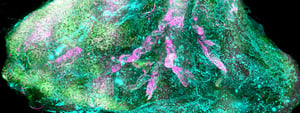Making human organs transparent, literally, in order to understand the finest details of their structure and to find more effective treatments, but also, in the future, to reconstruct the injured areas of organs or entire ones using special 3D printers (to be used for transplants) – this is what an innovative technique developed by researchers from three major institutes in Munich, Bavaria (Germany) are promising to do: the Helmholtz Zentrum, the Ludwig Maximilians Universität and the Technische Universität. The results of the study were published in the scientific journal Cell. The researchers also presented their work in a very clear video on YouTube.
No-one has ever managed a similar feat, because the detergents used for the same purposes when studying the organs of laboratory animals (managing, in many cases, to make them transparent) do not work as well on human organs (taken from corpses), due to the complexity of human tissue and the strong presence of insoluble molecules, which stratify over the course of many years.
So the researchers tried a substance that was able to make small openings on the external walls of human organs, in such a way as to create an inward “gap”. They experimented with various compounds and discovered that a detergent called CHAPS did exactly that and, once penetrated, made the organs transparent to light.
They then made a microscopic high-resolution laser to capture images and linked it to an artificial intelligence system (deep learning) that reconstructed the structure of hundreds of thousands of cells that make up complex organs, like the human pancreas, kidney or thyroid, in 3D on a standard computer.
The next step in this technique, renamed SHANEL (Small-micelle-mediated Human orgAN Efficient clearing and Labeling), could link the information thus obtained with a 3D bio-printer in order to regenerate the damaged parts of organs, but also to study new, more “precise” treatments than those currently available, as they would be designed based on a highly-detailed image of the organ in question.

